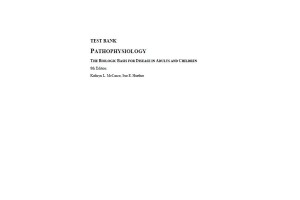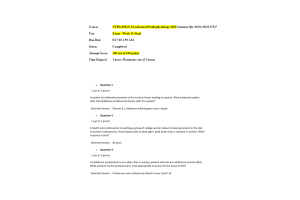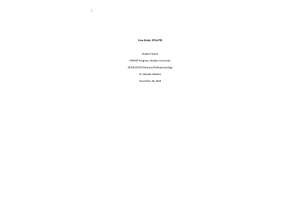NURS 6501 Week 8 Assignment; Case Study Analysis; 72-year-old female- TIA
- $20.00
Content Preview
72-year-old female TIA Week 8, Case Study Analysis
The patient presented with possible stroke-like symptoms. Stroke is the leading cause of long-term disability in the United States (Vega, 2020). A transient ischemic attack (TIA) is a “mini-stroke.” It is a transient episode of neurologic dysfunction due to focal brain, spinal cord, or retinal ischemia without acute infarction or tissue injury (Panuganti et al., 2022). Symptoms typically resolve within hours but less than 24 hours without causing permanent tissue damage. TIAs are caused by decreased blood flow to the brain but can be reversible if addressed promptly. About 75% of CVAs occur among those older than 65. The patient's age of 72 and previous stroke puts the patient at risk for another stroke. The acute onset of slurred speech, lethargy, and speechlessness can result from focal cerebral ischemia. (McCance & Huether, 2019, pp. 565–566).
The patient risk factors contributing to cerebrovascular disease and cerebrovascular accidents are high total cholesterol or low high-density lipoprotein (HDL) cholesterol and elevated lipoprotein-a. Blood work revealed the patient's cholesterol level of 306, HDL of 36, and LDL of 140. The total cholesterol in women over 20 ranges from 125 to 200mg/dL. Their LDL levels should be less than 100mg/dL and should have 50mg/dL or higher of HDL (Brennan, 2021).
Neurological and musculoskeletal pathophysiologic processes
Stroke-like symptoms during TIA can last several minutes to less than 24 hours. Typical motor impairments associated with TIA include unilateral motor weakness, paralysis of limbs, gait disturbance, and loss of coordination. Additional symptoms of TIA include severe acute headache, acute onset of confusion, loss of vision, or unsteady gait that does not resolve. The patient had an old left-sided infarct of the temporal lobe region……..Continue






